Intervention: An Act of Hope and Love
July 20, 2023 •Tara Treatment Center l Franklin, Indiana

The interventions you see on TV set a bad tone for real life. They typically show a group of people ganging up on an individual, who becomes defensive and doesn’t respond because of the insults and digs to their character. The whole thing “blows up” and ends in relationships that are even more fractured than before. Not to mention, the individual who’s facing addiction doesn’t end up getting treatment and often continues in a downward spiral with no end in sight.
Interventions used to be primarily shame-based and accusatory like the media stereotype; however, these days that practice is dwindling. Intervention meetings don’t have to be negatively directed. In fact, the interventions and specialty therapists who perform them in a loving way get better results and are able to help more people and families dealing with a Substance Use Disorder (SUD) get the help they need to heal.
We talked with Bruce Perkins, a nationally-renowned interventionist who’s been in the field for many years, to learn what a successful intervention looks like and why working with an intervention expert is helpful to getting assistance for those you love.
Two Types of Intervention
There are two primary types of intervention: closed and invitational.
Closed interventions are those where the intervention team shows up to the person’s house without prior notice to the individual. Prior to the pandemic, Bruce explains that these were the primary method he used because he didn’t believe an individual would willingly attend their own intervention.
He says, “We’re just going to knock on the door on a Saturday morning. We’re going to come in and have one person say, ‘Hey, we know this is a bit of a surprise to you, but we’re asking for just a few minutes of your time. It won’t take long. This is the family member, this is Bruce, and could you hear us out this morning.”
Typically during a closed intervention, someone who lives with the person initiates the team: “Probably 90% of the time we have somebody who lives with them, so they know their schedule.” The loved one invites the intervention team into their home.
Of his 2,250 interventions, Bruce notes that more than 2,000 have been closed. Since COVID began, he’s only had one person who wouldn’t hear the intervention team out during a closed intervention, but went to treatment three days later because he left the letters there.
The pandemic changed many things, though, and these days Bruce is doing more invitational interventions.
An invitational intervention is one where a family member or friend calls the person and invites them to a therapy session with Bruce. They often say something to the effect of, “Listen, we’ve been meeting with Bruce Perkins. He’s a therapist that specializes in addiction support for us. We’re meeting again Saturday, and Bruce thought since we’re talking about you, it was only fair that you’re there. In fact, Bruce wants your opinion. Here’s his phone number.”
Initially, Bruce was convinced people wouldn’t show up to invitational meetings – he tries to stay away from the term intervention in these situations. He’s been pleasantly surprised, though, and notes, “It’s amazing how consistently they show up.”
During the intervention, Bruce invites the individual to share their side of the story. That often sounds something like “Well, it’s really not that bad. I think I have a handle on this, and I just want everyone to know you’re overreacting.” The individual shares their message and then Bruce asks if the person is willing to listen to their family members’ and friends’ letters. Usually they say yes and the intervention proceeds from there.
It’s important to note that no matter which approach Bruce and the intervention team decides to take, it’s always done with love and dignity.
How a Loving Intervention Works
Planning and executing an intervention takes time. For Bruce, there’s about a week’s worth of focused work in addition to the group planning session and intervention itself.
Throughout the process, Bruce works with the individual’s loved ones to make sure the intervention is a success. There are about eight steps in the general process.
Step 1: A treatment center refers a client or a potential client calls Bruce to set up an initial consultation. During this call, Bruce works to “figure out which program would be most appropriate” and get a sense of “what we’re working with.”
Step 2: Bruce develops an intervention team of people who love and care about the individual. Usually 4-8 people are part of the team.
Step 3: Bruce holds an initial session with the intervention team. He also talks with each team member on the phone individually to help them prepare their letters for the intervention. The letters will be read aloud by each person on the day of the intervention, which means they need to be thoughtful and crafted with care. Each part of the letter comes from a place of love and nonjudgement. Bruce emphasizes that nothing in the letters should be “preachy or moralizing.” Bruce takes time to monitor and adjust the wording to avoid these issues with each letter. When they’re structured well, it’s “amazing how well the individual listens” to what’s being said.
Step 4: Bruce and the intervention team meet for a half day planning session. He brings all the letters and everyone practices what they’re going to say and how they’re going to say it: “it’s essentially a dress rehearsal reading the letters out loud.” He selects the person the addicted individual is most likely to listen to to do the introduction.
Step 5: On the day of the intervention, everyone reads their letters aloud. When everyone has shared, Bruce sits next to the individual and introduces himself again. He reminds the person of his name and recaps some of the wonderful things the group shared. Then he says something to the effect of, “In short, we’re not judging you as a person, but what we’re saying is that wonderful, good people get sick sometimes. Based on this information, substance abuse issues are taking over your life.”
Step 6: Bruce shares a little about his past and his own intervention. This helps put the person more at ease because intervention is an overwhelming process. He shares the illness that addiction is and explains, “What we’re talking about isn’t just the drinking or drug usage, but about you healing on the inside from your depression, generalized anxiety, and certainly substance abuse.”
Step 7: Bruce tells the person that he has an evaluation set up at a treatment center for them. The payment and logistics are already set up, and staff is waiting for Bruce to arrive with the client. He asks if they’re willing to go.
Step 8: Bruce asks the group to make one last closing comment to answer the question: What would it do for you if the person was willing to get help today? In his own intervention, this is the piece that was most impactful because his mother shared how much his addiction had affected her. He didn’t understand until that moment, and was spurred to enter into recovery. This is true for 90-95% of the interventions he leads, too. The individual isn’t always thrilled about it, but “most of the time they’re kind of grateful for it by the time we finish.”
All of the effort is worth it to see families and people battling addiction begin to heal.
Why it Works
There are many reasons to hold an intervention. Although some people still hold shame-based interventions, they simply don’t work. Bruce explains that saying things like “you did this” and “can’t you see” is the worst thing you can do. “Addicted individuals are already carrying enough shame within the illness. They’re not always in touch with it, but it’s there. The last thing anybody needs is a pile on judgmental intervention,“ he says.
In his practice, which has an astonishing 95% success rate, each intervention is done in love with care and support. He emphasizes, “There’s nothing punitive about it. if it’s facilitated properly, they feel the love. It’s genuine and authentic.”
It’s also not just about the person being intervened upon. Bruce works with the family members so that everyone can “start their own healing process and recovery.” When you have family members recovering together, it creates an “unshakeable foundation for healthier recoveries.”
The family also benefits from intervention because they feel grateful to be heard. They’re writing and reading the letters themselves, so they get to use their own voice to help their loved one.
Bruce starts the loved ones going to Alcoholics Anonymous meetings and codependency therapy so that everyone can begin recovering from this family illness. Bruce expresses, “Let’s heal the family, not just the person with the addiction.”
As they’re planning together, Bruce teaches the loved ones how to carry themselves when they walk into the intervention and how to make the tone of their voice soft and approachable. They start to understand that they have to let go and need to be “proactive in their own recovery” as they’re supporting their addicted loved one.
Typically, when clients first begin working with Bruce, “They’re pretty shut down by the time they get to me and I open the system up and start communicating with them again.” He explains that this is often a revolutionary experience for families, especially those who are participating in 12 step communities.
When the family and friends get involved in intervention and begin working with Bruce, they learn how to approach the situation. Hope and loving kindness changes everything, and Bruce expresses: “It’s a rarity when somebody says they’re unwilling to listen.”
